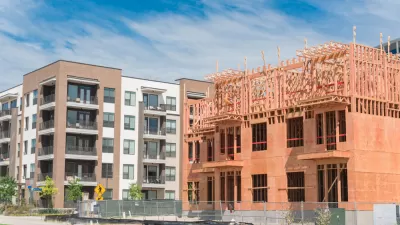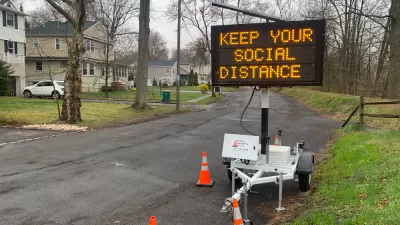The relief that renters have been seeking might finally be on the way, if several market indicators are to be believed. If and when rent does fall, supply might have finally caught up with demand.

According to an article by Joe Cortright, "there are a few hopeful indicators from housing markets that the long promised relief from increased supply is starting to show up, at least in a small way."
Cortright cites two reports, "one national, and one quite local," as evidence of a market shift. The first is a market analysis from REIS, which specializes in "[following] national trends in apartment construction tracking delivery (the completion of new apartments) and absorption (how many newly completed apartments get leased." Cortright summarizes the news from this source:
REIS analysts are reading the data to suggest that construction of new apartments is finally starting to have an impact on the market. REIS’s Scott Humphreys says: “It’s official: developers are finally building more apartments than there are renters to fill them.”
Also of relevance to the national rental market is a post on the Calculated Risk blog, which shares vacancy rates from the National MultiFamily Housing Council (NMFC). "Their data show that 'market tightness' has been trending downwards for the past couple of years," writes Cortright.
For local evidence of those trends, Cortright calls on a Boston Globe report that finds rents in Boston increasing at the slowest rate in the past five years. "The news from Boston echoes reports from markets as diverse as Seattle, Denver, and Houston, that the growing number of new properties being completed is producing at least temporarily higher vacancy rates and more favorable rental offerings for tenants," adds Cortright.
FULL STORY: Nationally, apartment supply may be catching demand

Planetizen Federal Action Tracker
A weekly monitor of how Trump’s orders and actions are impacting planners and planning in America.

San Francisco's School District Spent $105M To Build Affordable Housing for Teachers — And That's Just the Beginning
SFUSD joins a growing list of school districts using their land holdings to address housing affordability challenges faced by their own employees.

The Tiny, Adorable $7,000 Car Turning Japan Onto EVs
The single seat Mibot charges from a regular plug as quickly as an iPad, and is about half the price of an average EV.

As Trump Phases Out FEMA, Is It Time to Flee the Floodplains?
With less federal funding available for disaster relief efforts, the need to relocate at-risk communities is more urgent than ever.

With Protected Lanes, 460% More People Commute by Bike
For those needing more ammo, more data proving what we already knew is here.

In More Metros Than You’d Think, Suburbs are Now More Expensive Than the City
If you're moving to the burbs to save on square footage, data shows you should think again.
Urban Design for Planners 1: Software Tools
This six-course series explores essential urban design concepts using open source software and equips planners with the tools they need to participate fully in the urban design process.
Planning for Universal Design
Learn the tools for implementing Universal Design in planning regulations.
Smith Gee Studio
City of Charlotte
City of Camden Redevelopment Agency
City of Astoria
Transportation Research & Education Center (TREC) at Portland State University
US High Speed Rail Association
City of Camden Redevelopment Agency
Municipality of Princeton (NJ)





























